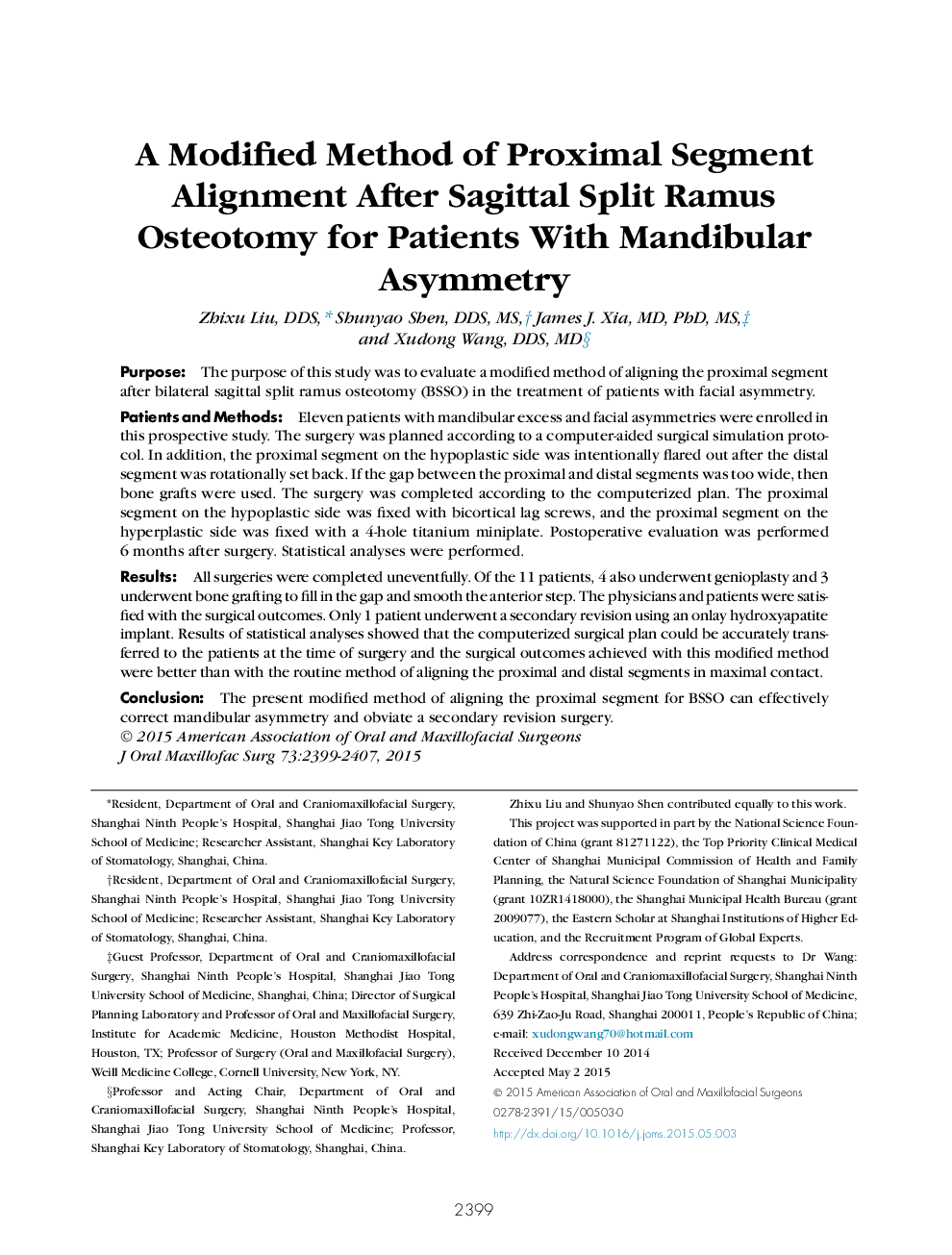| Article ID | Journal | Published Year | Pages | File Type |
|---|---|---|---|---|
| 3153013 | Journal of Oral and Maxillofacial Surgery | 2015 | 9 Pages |
PurposeThe purpose of this study was to evaluate a modified method of aligning the proximal segment after bilateral sagittal split ramus osteotomy (BSSO) in the treatment of patients with facial asymmetry.Patients and MethodsEleven patients with mandibular excess and facial asymmetries were enrolled in this prospective study. The surgery was planned according to a computer-aided surgical simulation protocol. In addition, the proximal segment on the hypoplastic side was intentionally flared out after the distal segment was rotationally set back. If the gap between the proximal and distal segments was too wide, then bone grafts were used. The surgery was completed according to the computerized plan. The proximal segment on the hypoplastic side was fixed with bicortical lag screws, and the proximal segment on the hyperplastic side was fixed with a 4-hole titanium miniplate. Postoperative evaluation was performed 6 months after surgery. Statistical analyses were performed.ResultsAll surgeries were completed uneventfully. Of the 11 patients, 4 also underwent genioplasty and 3 underwent bone grafting to fill in the gap and smooth the anterior step. The physicians and patients were satisfied with the surgical outcomes. Only 1 patient underwent a secondary revision using an onlay hydroxyapatite implant. Results of statistical analyses showed that the computerized surgical plan could be accurately transferred to the patients at the time of surgery and the surgical outcomes achieved with this modified method were better than with the routine method of aligning the proximal and distal segments in maximal contact.ConclusionThe present modified method of aligning the proximal segment for BSSO can effectively correct mandibular asymmetry and obviate a secondary revision surgery.
